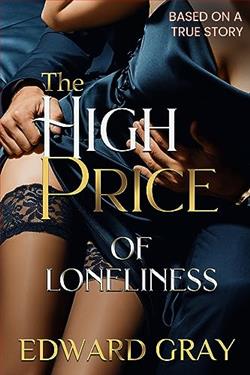Founded in 1907 by a Catholic teaching order named the Religious of the Sacred Heart of Mary, Marymount College was the first of a vast network of Marymount schools around the world. The founder, Mother Joseph Butler, made it her life's mission to create places of learning where women could receive an education that would prepare them for occupations of authority and importance throughout every nation of the globe. An independent liberal-arts college in the Catholic tradition, Marymount was one of the fastest-growing women's institutes of learning in the United States.
The college buildings were austere and mostly constructed of tan-colored brick. Giordino could not help staring at the attractive girls hustling to and from class as he turned onto the main street of the campus. He drove past Buder Hall, a large building with a dome beneath a cross, and pulled to a stop in a parking lot beside Gerard Hall, where the faculty offices were located on the first two floors.
They walked up the steps of Gerard Hall, through the doors and to an information desk. A young blond student in her early twenties looked up at Pitt as he looked down at her and smiled.
"How may I direct you?" she asked cordially.
"Anthropology Department. Dr. Jerry Wednesday's office."
"Go up the stairs to your left. Then take a right. The Anthropology Department is through the door at the end of the hallway."
"Thank you."
"Seeing all these gorgeous young creatures makes me want to go to school again," said Giordino, as they passed a bevy of girls on the stairs.
"You're out of luck," said Pitt. "It's an all-girls school. No men allowed."
"Maybe I could teach."
"You'd be tossed out the door within a week for lecherous behavior."
Another young student working in the Anthropology Department ushered them into Dr. Wednesday's office. The man who turned from pulling a book from a tightly packed shelf smiled as the three strangers filtered into his cluttered office that smelled of musty aca-demia. Dr. Jerry Wednesday wasn't any taller than Giordino, but much thinner. No tweed jacket with leather elbows or pipe-smoking for this man. He was dressed in a sweatshirt, Levi's and hiking boots. His narrow face was clean-shaven, and the thinning hair on his forehead suggested someone who was in his late forties. The eyes were a dark gray, and he smiled with straight, even, white teeth an orthodontist could be proud of.
"One of you gentlemen must be the man who called," he said jovially.
"I called," said Pitt. "This is Kelly Egan and Al Giordino, and I'm Dirk Pitt."
"Won't you please sit down? You caught me at a good time. I don't have a class for another two hours." Then he looked at Kelly. "Was your father Dr. Elmore Egan, by any chance?"
"He was my father," Kelly answered.
"I was very sorry to hear about his death," Wednesday said sincerely. "I met and corresponded with him, you know. He was researching a Viking expedition he thought had passed through New York in ... 1035, I believe it was."
"Yes, Dad was very interested in the rune stones they left behind."
"We've just come from Marlys Kaiser in Minnesota," said Pitt. "It was s
he who suggested we meet with you."
"A grand lady." Wednesday sat down behind his cluttered desk. "I suppose Marlys mentioned that Dr. Egan thought the Vikings who settled in this area were massacred by the Indians in the valley."
Kelly nodded. "She touched on the subject."
Wednesday rummaged around an open desk drawer and retrieved a sheaf of wrinkled papers. "Very little is known about the early American Indians who lived along the Hudson River. The first record and description of the local natives came from Giovanni da Verrazano in 1524. During his epic voyage up and down the East Coast, he entered New York Harbor, where he anchored and explored for two weeks, before continuing north to Newfoundland and sailing back to France."
Wednesday paused as he studied his notes. "Verrazano went on to describe the American natives as having sharp faces, long black hair and black eyes. They dressed in fox and deer skin and adorned themselves with copper ornaments. He noted that they carved canoes from individual logs and lived in either round or long houses constructed from split logs and thatched with long grass and tree branches. Except for Verrazano's earliest account, the ancient Indians left little for archaeologists to discover, study and record. Much of the early inhabitants' life can be only conjectured."
"So the history of the American Indians begins in 1524," said Giordino.
"Recorded history, yes. The next great navigator to leave an account was Henry Hudson in 1609. He sailed into the harbor and up the river that was given his name. Amazingly, he made it as far as Cohoes, about ten miles above Albany, where he was stopped by the falls. He described the Indians who lived on the lower part of the river as strong and warlike, while those farther up were friendly and polite."
"What did they use as weapons?"
"Bows and arrows, with points made of sharp stones and attached to the shafts with hard resin. They had also carved clubs and made hatchets fashioned with large flints."
"What was their food supply?" asked Kelly.
"Game and every kind of fish was plentiful, especially sturgeon, salmon and oysters. They farmed large fields of maize, or corn as we call it, which they cooked by baking, along with squash, sunflowers, and beans. They also produced tobacco, which they smoked in copper pipes. Copper was in abundance throughout the north around the Great Lakes and was the only metal Indians knew how to craft. They were aware of iron, but did not know how to process it."















